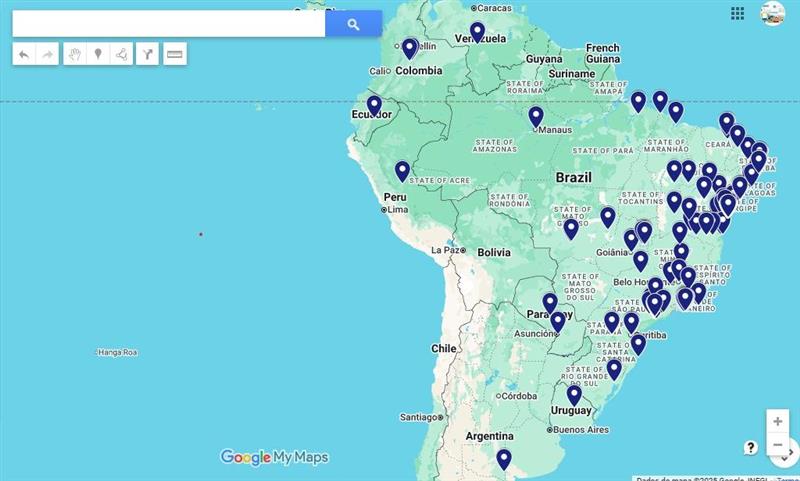Continuous PNAD
Unemployment drops to 12.1% in quarter ending in October
December 28, 2021 09h00 AM | Last Updated: December 28, 2021 04h47 PM

The unemployment rate dropped to 12.1% in the quarter ended in October. The drop was of 1.6 percentage points compared with the previous quarter. As a result, the number of persons looking for a job in Brazil fell 10.4%, hitting 12.9 million. On the other hand, the contingent of employed persons increased 3.6%, which represents more 3.3 million persons in the labor market in relation to the quarter ended in July. It increased by 8.7 million workers in the comparison with the same quarter a year ago.
These data can be found in the Continuous National Household Sample Survey (Continuous PNAD), released today (28) by the IBGE.
“The drop in the unemployment rate is related to the growth in employment, as it has been happening in the previous months. The increase in the number of employed persons occurred in six out of ten activity groups, like in trade, industry and lodging and food services,” states Adriana Beringuy, IBGE´s coordinator of Labor and Income. With that growth, the employment-population ratio, which is the percentage of employed persons in the population at working age, rose to 54.6%, the highest one since the quarter ended in April last year.
The increase in the employment was impacted by the number of persons employed with a formal contract in the private sector, which hit 33.9 million, a growth of 4.1% over the previous quarter. That means more 1.3 million persons. “Of the increase of 3.3 million persons in employment, 40% are workers with a formal contract in the private sector. The recovery of the formal jobs has been happening for some months, since the quarter ended in July. Although jobs with a formal contract in the private sector are still at a level below the level before the pandemic, they are tracing a growth path,” explains her.
Also in the private sector, the contingent of those employed without a formal contract increased 9.5% (or 1.0 million persons). That category added up to 12 million workers in the quarter ended in October. In the same period, the number of domestic workers without a formal contract grew 8.0% and that of employers without CNPJ, 7.4%. As a result, the informality rate hit 40.7%, which corresponds to 38.2 million informal workers in Brazil.
As the growth in employment is being influenced by the informal work, the usual real earnings dropped 4.6% and reached R$2,449. The drop was of 11.1% compared with the same quarter a year ago. The wage bill was of R$225 billion, remaining stable against the two quarters.
“In spite of a significant growth in employment, the wage bill remains stable. That happens because the earnings of workers have been shrinking - either because the expansion of work happens in less paid jobs or because of the inflation in the last months,” says the coordinator.
Self-employed workers increased by 2.6%, reaching the contingent of 25.6 million. They are more 638 thousand persons within that category. The increase in the number of domestic workers was of 7.8% also compared with the quarter ended in July, which represents an inclusion of 400 thousand persons. Most of that increase also came from informal work: 308 thousand persons were hired without a formal contract.
The population out of the workforce dropped 2.1% compared with the last quarter. Those people who were neither employed nor unemployed in the reference week added up to 65.2 million persons in the quarter ended in October. It reduced 5.4 million persons when compared with the same period last year.
Compared with the last quarter, 436 thousand persons left the potential workforce, which comprises the persons at working age who were neither employed nor unemployed, but had a potential to be in the workforce. That contingent was estimated at 9.3 million persons.
Discouraged persons are included in that group, persons who did not look for a job but who would like to get a job and were available to work. That group was reduced by 3.8% and it was estimated at 5.1 million persons. It dropped 11.9% in the comparison with the same period last year, when 5.8 million discouraged persons lived in Brazil.
Increase in employment is influenced by trade
The number of those employed in trade grew 6.4%, which represents more 1.1 million persons working in this sector. The increase in industry was of 4.6%, or more 535 thousand persons. In the same period, more 500 thousand persons began to work in the segment of lodging and food (11.0%). In construction, employment grew 6.5% (or 456 thousand persons).
“Of the ten activity groups, six grew in employment in the comparison with the previous quarter, and the others remained stable. When we compare with the same quarter a year ago, nine registered a significant growth. It shows that the economic environment in the quarter ended in October is quite different from the same period last year. The recovery already shows a much more favorable scenario for employment,” states Beringuy.
More about the survey
The Continuous PNAD is the major instrument to follow up the workforce in Brazil. The sample of the survey per quarter corresponds to 211 thousand households surveyed in Brazil. Nearly two thousand interviewers work in the survey in 26 states and in the Federal District, integrated in the data collection network of more than 500 IBGE agencies.
Due to the Covid-19 pandemic, the IBGE implemented the data collection through telephone since March 17, 2020. The id of the interviewers can be confirmed on the Answering the IBGE website or through the Call Center (0800 7218181) by checking their ID numbers, which can be requested by the informants.

















